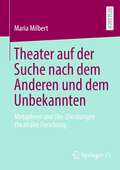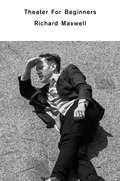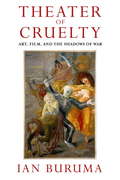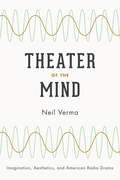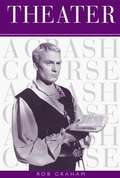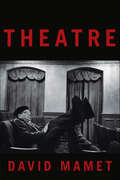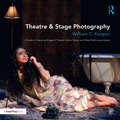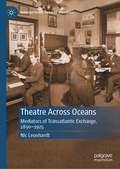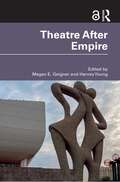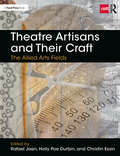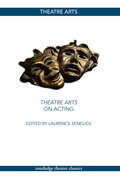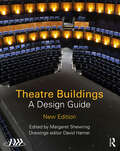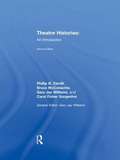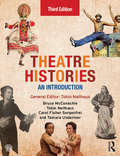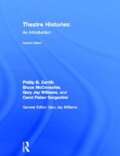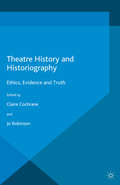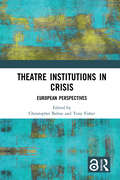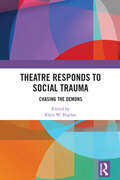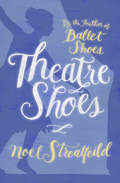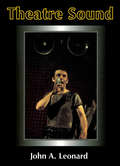- Table View
- List View
Theater auf der Suche nach dem Anderen und dem Unbekannten: Metaphern und (Be-)Deutungen theatraler Forschung
by Maria MilbertForschendes Theater, theatrale Feldforschung, performative Forschung – solche Begriffe prägen inzwischen das Theater einschließlich der Theaterpädagogik. Sie stehen dafür, im Rahmen von Gruppenprozessen mit den Mitteln des Theaters zu forschen. Was aber bedeutet hier ‚Forschung‘? In Praxis und Analysen finden sich unterschiedliche, meist in Metaphern ausgedrückte Verständnisse. Die Studie analysiert daher sprachliche Bilder theatralen Forschens mit systematischer Metaphernanalyse, und zwar anhand von Interviews mit Forschenden aus der Theaterkunst, -pädagogik und dem Darstellenden Spiel sowie anhand künstlerischer Theorien. Dabei wird deutlich, dass theatrale Forschung stets eine Auseinandersetzung mit dem Verhältnis von Wissenschaft und Kunst impliziert. Zudem steht sie in einem Spannungsfeld zwischen dem Anderen und dem Unbekannten: Forschende suchen nach neuen Strategien und Erkenntnissen, gehen aber gleichzeitig davon aus, dass ihre Forschung nie abgeschlossen werden kann. Sie zielt auch auf das Nichtwissen, auf individuelle Erfahrung und unrealisierbare Wünsche – auf das Andere.
Theater for Beginners
by Richard MaxwellRichard Maxwell, the downtown writer and director with a deadpan aesthetic and an ever-innovative body of work, has written a quasi-study guide to the art of making theater according to his "affecting affectless technique" (New York Times...) This illuminating volume will provide students and artists with a deeper understanding of Maxwell's work, aesthetic philosophy, and process for creating theater.
Theater of Cruelty
by Ian BurumaIan Buruma is fascinated, he writes, "by what makes the human species behave atrociously." In Theater of Cruelty the acclaimed author of The Wages of Guilt and Year Zero: A History of 1945 once again turns to World War II to explore that question--to the Nazi occupation of Paris, the Allied bombing of German cities, the international controversies over Anne Frank's diaries, Japan's militarist intellectuals and its kamikaze pilots. One way that people respond to power and cruelty, Buruma argues, is through art, and the art that most interests him reveals the dark impulses beneath the veneer of civilized behavior. This is what draws him to German and Japanese artists such as Max Beckmann, George Grosz, Ernst Ludwig Kirchner, Mishima Yukio, and Yokoo Tadanori, as well as to filmmakers such as Werner Herzog, Rainer Werner Fassbinder, Kurosawa Kiyoshi, and Hans-Jürgen Syberberg. All were affected by fascism and its terrible consequences; all "looked into the abyss and made art of what they saw."Whether he is writing in this wide-ranging collection about war, artists, or film--or about David Bowie's music, R. Crumb's drawings, the Palestinians of the West Bank, or Asian theme parks--Ian Buruma brings sympathetic historical insight and shrewd aesthetic judgment to understanding the diverse ways that people deal with violence and cruelty in life and in art.Theater of Cruelty includes eight pages of color and black & white images.
Theater of the Mind: Imagination, Aesthetics, and American Radio Drama
by Neil VermaFor generations, fans and critics have characterized classic American radio drama as a "theater of the mind. " This book unpacks that characterization by recasting the radio play as an aesthetic object within its unique historical context. In Theater of the Mind, Neil Verma applies an array of critical methods to more than six thousand recordings to produce a vivid new account of radio drama from the Depression to the Cold War. In this sweeping exploration of dramatic conventions, Verma investigates legendary dramas by the likes of Norman Corwin, Lucille Fletcher, and Wyllis Cooper on key programs ranging from The Columbia Workshop, The Mercury Theater on the Air, and Cavalcade of America to Lights Out!, Suspense, and Dragnet to reveal how these programs promoted and evolved a series of models of the imagination. With close readings of individual sound effects and charts of broad trends among formats, Verma not only gives us a new account of the most flourishing form of genre fiction in the mid-twentieth century but also presents a powerful case for the central place of the aesthetics of sound in the history of modern experience.
Theater of the Mind: Imagination, Aesthetics, and American Radio Drama
by Neil VermaFor generations, fans and critics have characterized classic American radio drama as a “theater of the mind.” This book unpacks that characterization by recasting the radio play as an aesthetic object within its unique historical context. In Theater of the Mind, Neil Verma applies an array of critical methods to more than six thousand recordings to produce a vivid new account of radio drama from the Depression to the Cold War.In this sweeping exploration of dramatic conventions, Verma investigates legendary dramas by the likes of Norman Corwin, Lucille Fletcher, and Wyllis Cooper on key programs ranging from The Columbia Workshop, The Mercury Theater on the Air, and Cavalcade of America to Lights Out!, Suspense, and Dragnet to reveal how these programs promoted and evolved a series of models of the imagination.With close readings of individual sound effects and charts of broad trends among formats, Verma not only gives us a new account of the most flourishing form of genre fiction in the mid-twentieth century but also presents a powerful case for the central place of the aesthetics of sound in the history of modern experience.
Theater: A Crash Course
by Rob GrahamHere's a ticket to instant sophistication for anyone who delves into this loving celebration of theater art, past and present, scripted in a lighthearted but highly instructive voice. Whisked on a world tour, readers have a box seat at events ranging from ancient ritual plays and classic Greek tragedy/comedy through medieval, Elizabethan, Jacobean, Restoration, Mystic, Realist, and Expressionist works. Traditions as diverse as Islamic, Russian, American, French, Irish, African, Scandinavian, Japanese, Chinese, and many others are outlined, taking in every continent and numerous cultures through the ages. Rob Graham is both a senior lecturer on theater and head of film and television studies at Brunel University in England.
Theatre
by David MametIf theatre were a religion, explains David Mamet in his opening chapter, "many of the observations and suggestions in this book might be heretical." As always, Mamet delivers on his promise: in Theatre, the acclaimed author of Glengarry Glen Ross and Speed the Plow calls for nothing less than the death of the director and the end of acting theory. For Mamet, either actors are good or they are non-actors, and good actors generally work best without the interference of a director, however well-intentioned. Issue plays, political correctness, method actors, impossible directions, Stanislavksy, and elitists all fall under Mamet's critical gaze. To students, teachers, and directors who crave a blast of fresh air in a world that can be insular and fearful of change, Theatre throws down a gauntlet that challenges everyone to do better, including Mamet himself.
Theatre & Stage Photography: A Guide to Capturing Images of Theatre, Dance, Opera, and Other Performance Events
by William KenyonDocumenting theatrical and stage events under the often dramatic lighting designed for the production provides a number of specific photographic challenges, and is unlike most every other branch of photography. Theatre & Stage Photography provides an overview of basic photography as it applies to "available-light" situations, and will move both basic and experienced photographers through the process of accurately capturing both the production process and the resultant performance. The book is accompanied by additional web content found at stagephoto.org, including tutorials, author blog, a photo gallery, and more resources.
Theatre Across Oceans: Mediators of Transatlantic Exchange, 1890–1925 (Transnational Theatre Histories)
by Nic LeonhardtTheatre Across Oceans: Mediators Of Transatlantic Exchange allows the reader to enter and understand the infrastructural 'backstage area' of global cultural mobility during the years between 1890 and 1925. Located within the research fields of global history and theory, the geographical focus of the book is a transatlantic one, based on the active exchange in this phase between North and South America and Europe. Emanating from a rich body of archival material, the study argues that this exchange was essentially facilitated and controlled by professional theatrical mediators (agents, brokers), who have not been sufficiently researched within theatre or historical studies. The low visibility of mediators in the scientific research is in diametrical contrast to the enormous power that they possessed in the period dealt with in this book.
Theatre After Empire
by Harvey Young Megan E. GeignerEmphasizing the resilience of theatre arts in the midst of significant political change, Theatre After Empire spotlights the emergence of new performance styles in the wake of collapsed political systems. Centering on theatrical works from the late nineteenth century to the present, twelve original essays written by prominent theatre scholars showcase the development of new work after social revolutions, independence campaigns, the overthrow of monarchies, and world wars. Global in scope, this book features performances occurring across Africa, the Americas, Asia, Europe, and the Middle East. The essays attend to a range of live events—theatre, dance, and performance art—that stage subaltern experiences and reveal societies in the midst of cultural, political, and geographic transition. This collection is an engaging resource for students and scholars of theatre and performance; world history; and those interested in postcolonialism, multiculturalism, and transnationalism.
Theatre After Empire
by Harvey YoungEmphasizing the resilience of theatre arts in the midst of significant political change, Theatre After Empire spotlights the emergence of new performance styles in the wake of collapsed political systems.Centering on theatrical works from the late nineteenth century to the present, twelve original essays written by prominent theatre scholars showcase the development of new work after social revolutions, independence campaigns, the overthrow of monarchies, and world wars. Global in scope, this book features performances occurring across Africa, the Americas, Asia, Europe, and the Middle East. The essays attend to a range of live events—theatre, dance, and performance art—that stage subaltern experiences and reveal societies in the midst of cultural, political, and geographic transition.This collection is an engaging resource for students and scholars of theatre and performance; world history; and those interested in postcolonialism, multiculturalism, and transnationalism.The Introduction ("Framing Latine Theatre and Performance") of this book is freely available as a downloadable Open Access PDF at http://www.taylorfrancis.com under a Creative Commons [Attribution-Non Commercial-No Derivatives (CC-BY-NC-ND)] 4.0 license.
Theatre Artisans and Their Craft: The Allied Arts Fields (Backstage)
by Rafael JaenTheatre Artisans and Their Craft: The Allied Arts Fields profiles fourteen remarkable artists and technicians who elevate theatre production to new dimensions, explore new materials and technologies, and introduce new safety standards and solutions. Readers will learn how the featured artists delved into entrepreneurial ventures and created their own work for themselves; researching, studying, and experimenting, seeking answers when none were available. The book explores how to make an impact in the entertainment industry from behind the scenes, and how students can model themselves after these successful professionals to jump-start their career in theatre production. Aimed at theatre and film practitioners in the allied arts fields, Theatre Artisans and Their Craft offers a collection of success stories that are both inspiring and informative.
Theatre Arts on Acting
by Laurence SenelickDuring its fifty year run, Theatre Arts Magazine was a bustling forum for the foremost names in the performing arts, including Stanislavski, Laurence Olivier, Lee Strasberg, John Gielgud and Shelley Winters. Renowned theatre historian Laurence Senelick has plundered its stunning archives to assemble a stellar collection of articles on every aspect of acting and theatrical life.
Theatre Buildings: A Design Guide
by Margaret Shewring David HamerIn 2021, its Diamond Jubilee year, the Association of British Theatre Technicians (ABTT) undertook to revise Theatre Buildings: A Design Guide (Routledge, 2010). This new edition (Routledge, 2023) has substantially re-written text with fresh images and entirely new reference projects, providing essential guidance for all those engaged in the design of theatre buildings. Edited by Margaret Shewring (Emeritus Reader, University of Warwick, former Director of the Postgraduate Diploma and MA in Theatre Consultancy), this new publication is written by a team of international experts, architects, theatre consultants, acousticians, engineers and industry professionals led by Tim Foster (Foster Wilson Size) and Robin Townley (CEO of the ABTT). It provides an invaluable resource for those looking to build, remodel or conserve theatre buildings, taking into account the significant changes which have taken place in the last twelve years in all aspects of theatre design and technical practice. It locates those changes in the wider context of the need for sustainability in the theatre industry in response to the climate emergency, inclusivity, diversity of access, placemaking and concerns for health and wellbeing. This new edition provides guidance for anyone who seeks inspiration and encouragement to create or improve a place of entertainment or who seeks to understand what might be required to accommodate an audience for the presentation of live performance and the successful use, operation and organisation of such a venue. Its generous format and the thirty-two new reference projects, more than 260 high-resolution colour images and 175 diagrams and specially commissioned plans make it accessible and informative both to the general reader and the professional specialist.
Theatre Histories
by Phillip B. Zarrilli Carol Fisher Sorgenfrei Gary Jay Williams Bruce McconachieThis new edition of the innovative and widely acclaimed Theatre Histories: An Introduction offers overviews of theatre and drama in many world cultures and periods together with case studies demonstrating the methods and interpretive approaches used by today's theatre historians. Completely revised and renewed in color, enhancements and new material include: a full-color text design with added timelines to each opening section a wealth of new color illustrations to help convey the vitality of performances described new case studies on African, Asian, and Western subjects a new chapter on modernism, and updated and expanded chapters and part introductions fuller definitions of terms and concepts throughout in a new glossary a re-designed support website offering links to new audio-visual resources, expanded bibliographies, approaches to teaching theatre and performance history, discussion questions relating to case studies and an online glossary.
Theatre Histories: An Introduction
by Carol Fisher Sorgenfrei Tamara Underiner Bruce McConachie Tobin NellhausThis thoroughly revised and updated third edition of the innovative and widely acclaimed Theatre Histories: An Introduction offers a critical overview of global theatre and drama, spanning a broad wealth of world cultures and periods. Bringing together a group of scholars from a diverse range of backgrounds to add fresh perspectives on the history of global theatre, the book illustrates historiographical theories with case studies demonstrating various methods and interpretive approaches. Subtly restructured sections place the chapters within new thematic contexts to offer a clear overview of each period, while a revised chapter structure offers accessibility for students and instructors. Further new features and key updates to this third edition include: A dedicated chapter on historiography New, up to date, case studies Enhanced and reworked historical, cultural and political timelines, helping students to place each chapter within the historical context of the section Pronunciation guidance, both in the text and as an online audio guide, to aid the reader in accessing and internalizing unfamiliar terminology A new and updated companion website with further insights, activities and resources to enable students to further their knowledge and understanding of the theatre.
Theatre Histories: An Introduction
by Daphne P. Lei Patricia Ybarra Tamara Underiner Tobin NellhausThis updated fourth edition of Theatre Histories offers a critical overview of global theatre, drama, and performance, spanning a broad wealth of world cultures and periods, integrating them chronologically or thematically, and showing how they have often interacted.Bringing together a group of scholars from a diverse range of backgrounds and approaches to the history of global theater, this introduction to theatre history places theatre into its larger historical contexts and attends to communication’s role in shaping theatre. Its case studies provide deeper knowledge of selected topics in theater and drama, and its “Thinking Through Theatre Histories” boxes discuss important concepts and approaches used in the book.Features of the fully updated fourth edition include: Deeper coverage of East Asian and Latin American theater. Richer treatment of popular culture. More illustrations, photographs, and information about online resources. New case studies, include several written by authoritative scholars on the topic. Pronunciation guidance, both in the text and as audio files online. Timelines. An introduction on historiography. A website with additional case studies, a glossary, recordings of the pronunciation of important non-English terms, and instructor resources. A case studies library listing, including both those in print and online, for greater instructor choice and flexibility. This is an essential textbook for undergraduate courses in theatre history, world theatre and introduction to theatre, and anyone looking for a full and diverse account of the emergence, development, and continuing relevance of theatre to cultures and societies across the world.
Theatre Histories: An Introduction (2nd edition)
by Phillip B. Zarrilli Bruce A. Mcconachie Carol Fisher Sorgenfrei Gary Jay WilliamsThis new edition of the innovative and widely acclaimed Theatre Histories: An Introduction offers overviews of theatre and drama in many world cultures and periods together with case studies demonstrating the methods and interpretive approaches used by today's theatre historians. Completely revised and renewed in color, enhancements and new material include: A full-color text design with added timelines to each opening section A wealth of new color illustrations to help convey the vitality of performances described New case studies on African, Asian, and Western subjects A new chapter on modernism, and updated and expanded chapters and part introductions Fuller definitions of terms and concepts throughout in a new glossary A re-designed support website offering links to new audio-visual resources, expanded bibliographies, approaches to teaching theatre and performance history, discussion questions relating to case studies and an online glossary.
Theatre History and Historiography: Ethics, Evidence and Truth (Methuen Drama Handbooks Ser.)
by Claire CochraneThis collection of essays explores how historians of theatre apply ethical thinking to the attempt to truthfully represent their subject - whether that be the life of a well-known performer, or the little known history of colonial theatre in India - by exploring the process by which such histories are written, and the challenges they raise.
Theatre Institutions in Crisis: European Perspectives
by Christopher Balme; Tony FisherTheatre Institutions in Crisis examines how theatre in Europe is beset by a crisis on an institutional level and the pressing need for robust research into the complex configuration of factors at work that are leading to significant shifts in the way theatre is understood, organised, delivered, and received. Balme and Fisher bring together scholars from different disciplines and countries across Europe to examine what factors can be said to be most common to the institutional crisis of European theatre today. The methods employed are drawn from systems theory, social-scientific approaches, economics and statistics, theatre and performance, and other interpretative approaches (hermeneutics), and labour studies. This book will be of great interest to researchers, students, and practitioners working in the fields of performance and theatre studies. It will be particularly relevant to researchers with a particular interest in European theatre and its networks.
Theatre Responds to Social Trauma: Chasing the Demons (Routledge Series in Equity, Diversity, and Inclusion in Theatre and Performance)
by Ellen W. KaplanThis book is a collection of chapters by playwrights, directors, devisers, scholars, and educators whose praxis involves representing, theorizing, and performing social trauma.Chapters explore how psychic catastrophes and ruptures are often embedded in social systems of oppression and forged in zones of conflict within and across national borders. Through multiple lenses and diverse approaches, the authors examine the connections between collective trauma, social identity, and personal struggle. We look at the generational transmission of trauma, socially induced pathologies, and societal re-inscriptions of trauma, from mass incarceration to war-induced psychoses, from gendered violence through racist practices. Collective trauma may shape, protect, and preserve group identity, promoting a sense of cohesion and meaning, even as it shakes individuals through pain. Engaging with communities under significant stress through artistic practice offers a path towards reconstructing the meaning(s) of social trauma, making sense of the past, understanding the present, and re-visioning the future.The chapters combine theoretical and practical work, exploring the conceptual foundations and the artists’ processes as they interrogate the intersections of personal grief and communal mourning, through drama, poetry, and embodied performance.
Theatre Shoes
by Noel StreatfeildWhen their father is captured during the war, three children come to London to live with their grandmother and join their talented theatrical family in a school for stage training.
Theatre Shoes
by Noel StreatfeildThis captivating companion to Ballet Shoes tells the story of 3 orphans who become students at a famous theatre school After their father disappeared in the war, Sorrell, Holly, and Mark Forbes were sent to live with their grandfather. When he dies, the three orphans are on the move again--this time to London, where their maternal grandmother is a well-known actress. The city is a strange, bustling place that frightens young Holly, but the siblings' new home at 14 Ponsonby Square has a garden that instantly enchants them. Their grandmother enrols them at the Children's Academy of Dancing and Stage Training, where they'll carry on the tradition of their famous theatre family, which includes cousins they never knew they had. Stuck-up Miranda thinks she can act better than Sorrel; homesick Mark discovers he can sing; and Holly is a natural dancer. Will Sorrel, Holly, and Mark live up to their family legacy?
Theatre Shoes (Shoes #3)
by Noel StreatfeildThis captivating companion to Ballet Shoes tells the story of 3 orphans who become students at a famous theatre school After their father disappeared in the war, Sorrell, Holly, and Mark Forbes were sent to live with their grandfather. When he dies, the three orphans are on the move again—this time to London, where their maternal grandmother is a well-known actress. The city is a strange, bustling place that frightens young Holly, but the siblings&’ new home at 14 Ponsonby Square has a garden that instantly enchants them. Their grandmother enrols them at the Children&’s Academy of Dancing and Stage Training, where they&’ll carry on the tradition of their famous theatre family, which includes cousins they never knew they had. Stuck-up Miranda thinks she can act better than Sorrel; homesick Mark discovers he can sing; and Holly is a natural dancer. Will Sorrel, Holly, and Mark live up to their family legacy?
Theatre Sound
by John A. LeonardTheatre Sound includes a brief history of the use of sound in the theatre, discussions of musicals, sound effects, and the recording studio, and even an introduction to the physics and math of sound design. A bibliography and online reference section make this the new essential work for students of theatre and practicing sound designers.
